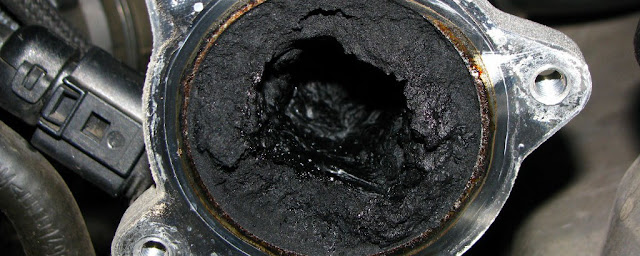WHAT IS THE EGR SYSTEM WHY USED?
EGR stands for Exhaust Gas Recirculation. It is an electropneumatic valve in land vehicles. This valve, located in the engine, takes an active role in the exhaust gas circulation processes. EGR, which damages the performance of the vehicle due to pollution, rust and wear over time, also causes the vehicle to malfunction.
Oxygen and fuel sent to the cylinder combustion chamber burn at very high temperatures, such high levels of NOx gas can occur. This leads to increased emissions. The Engine EGR frequently opens and closes the EGR valve at certain intervals by interpreting data such as engine load status and sensor values. When the EGR valve is open, some of the gas coming out of the exhaust manifold is sent back to the combustion chamber with the help of EGR. In this way, the oxygen rate in the interior is reduced, which significantly reduces the combustion temperature. At low combustion temperatures, NOx gases cannot be formed as much as before, thus reducing emissions. When the engine is fully loaded, the EGR valve is closed by the engine computer and stops sending exhaust gas to the combustion chamber, as performance is required from the vehicle. In this way, the combustion chamber, which is completely filled with oxygen, produces more power. The EGR valve may become contaminated due to the exhaust gases passing through it and a blockage may occur in it. The EGR system should be cleaned regularly in terms of factors such as soot, time and rust that cause EGR malfunctions. It is time to clean an EGR system; If dark black smoke comes out of the exhaust pipe, the engine stutters or does not start, the engine temperature rises, if it persists, the engine is damaged, fuel consumption increases rapidly, if there is a misfire caused by the gas pedal, the symptoms indicate that it is time to clean.
WHAT ARE EGR SYSTEM FAULT SYMPTOMS?
A faulty EGR valve can cause problems such as reduced engine power, misfire, loss of performance at sudden accelerations and high fuel consumption. It can also cause increased vehicle emissions.
EGR valves can become "open" or "closed" due to a build-up of soot particles, carbon deposits, and fuel impurities. Highway driving conditions are most ideal for your EGR valve. Because long trips allow the engine to warm up enough to get rid of carbon deposits. Urban driving conditions cause these deposits to increase.
In modern cars, the ECU (Engine Control Unit) can detect problems with the EGR valve and display a warning on the dashboard to warn the driver.
In general, the following symptoms are observed in EGR valve failure:
- Check engine light comes on
- Idle instability
- Engine knocking and hum
- Misfire and sudden acceleration issues
- Loss of performance
- Increase in fuel consumption
- Increase in emission values
- Strong smell of fuel or sulfur
WHY IS THE EGR SYSTEM CANCELED?
EGR cancellation is performed as an alternative to the high price required for the replacement of the malfunctioning valve, resulting in a decrease in performance and an increase in fuel consumption, when the clogged valve cannot give its old efficiency even after cleaning and is not fully opened and closed. Apart from these two reasons, users who always want full performance from their vehicle can have the EGR cancelled. Since the EGR valve will always be closed, they will always get full performance from their engines. For a good power gain, a large amount of oxygen must be present in the combustion chamber.
When a malfunction occurs, the engine malfunction warning lamp may come on, and it also gives one of the P**** codes below.
- P0401 - Insufficient EGR Flow
- P0402 - Excessive EGR Flow
- P0403 - EGR Circuit Malfunction
- P0404 - Exhaust Gas Recirculation A Control Circuit Range/Performance
- P0405 - EGR Sensor A Circuit Low Input
- P1404 - EGR Valve Stuck Position Open
- P1406 - EGR Valve Position Sensor Circuit Problem
Note: These fault codes may vary depending on the make and model of the vehicle.
WHAT ARE THE ADVANTAGES OF EGR SYSTEM CANCELLATION?
Renewed Engine Power
Low Engine Temperature
Improved Throttle Response
Enhanced Fuel Economy
Reduces Oil Contamination
Reduces Engine Carbon Buildup
Saves High Renewal Costs


